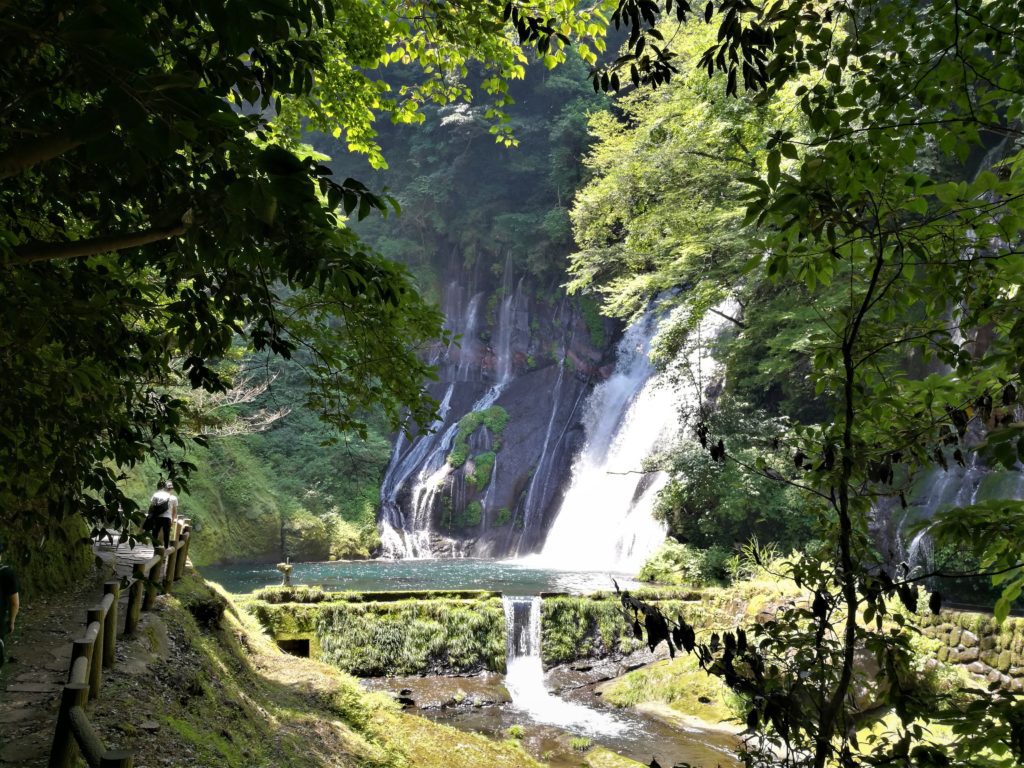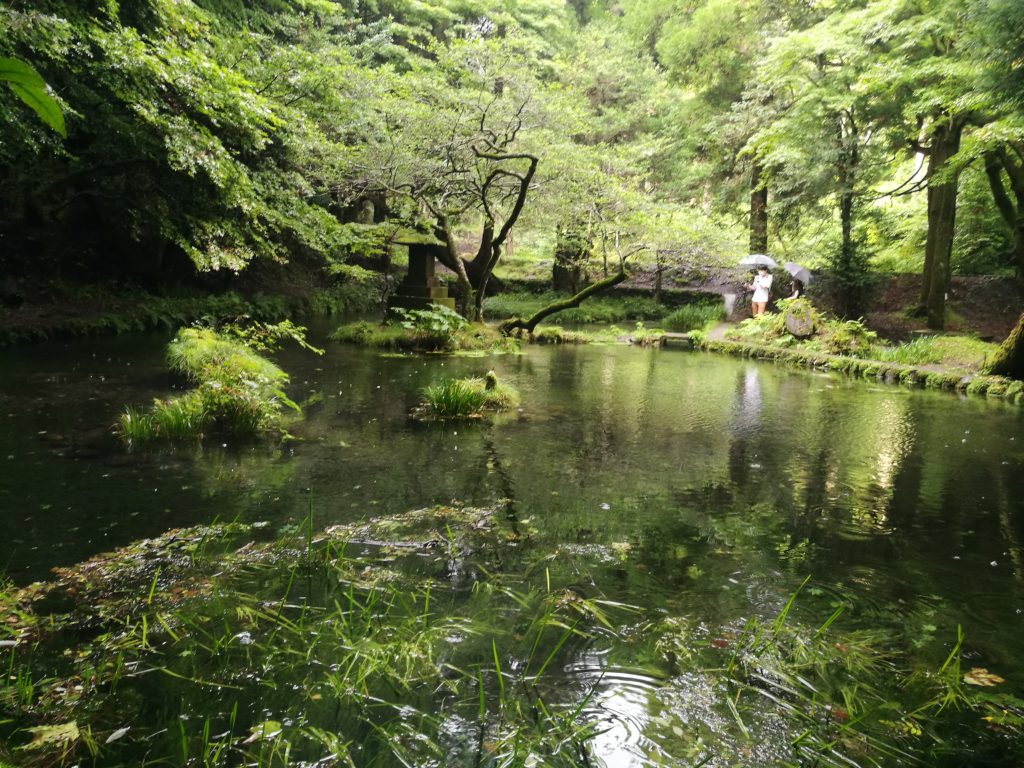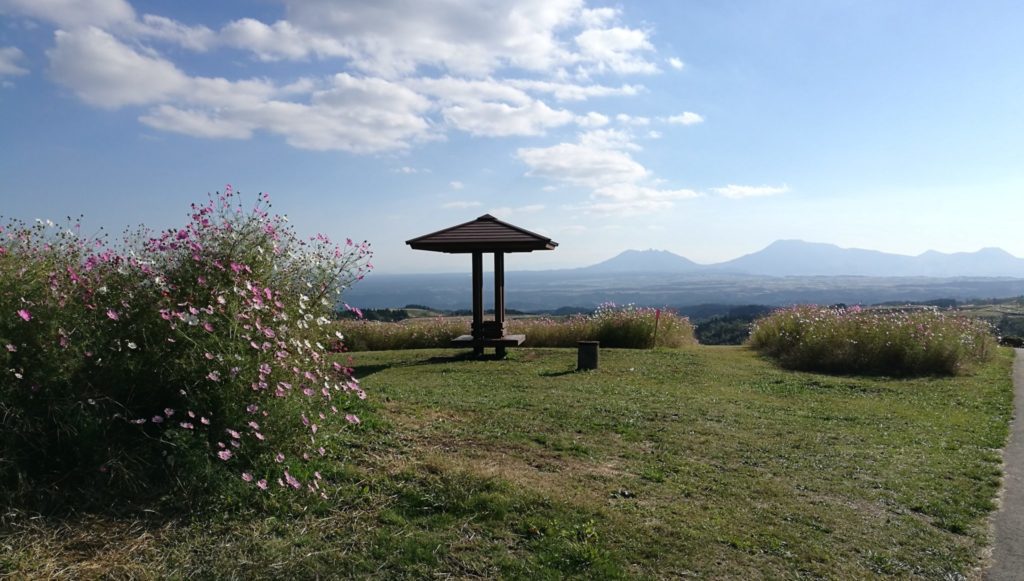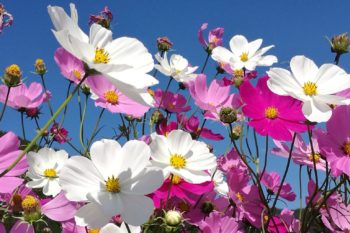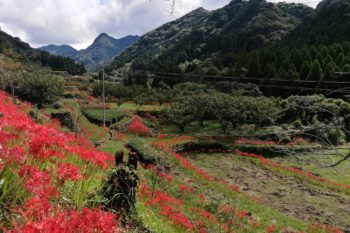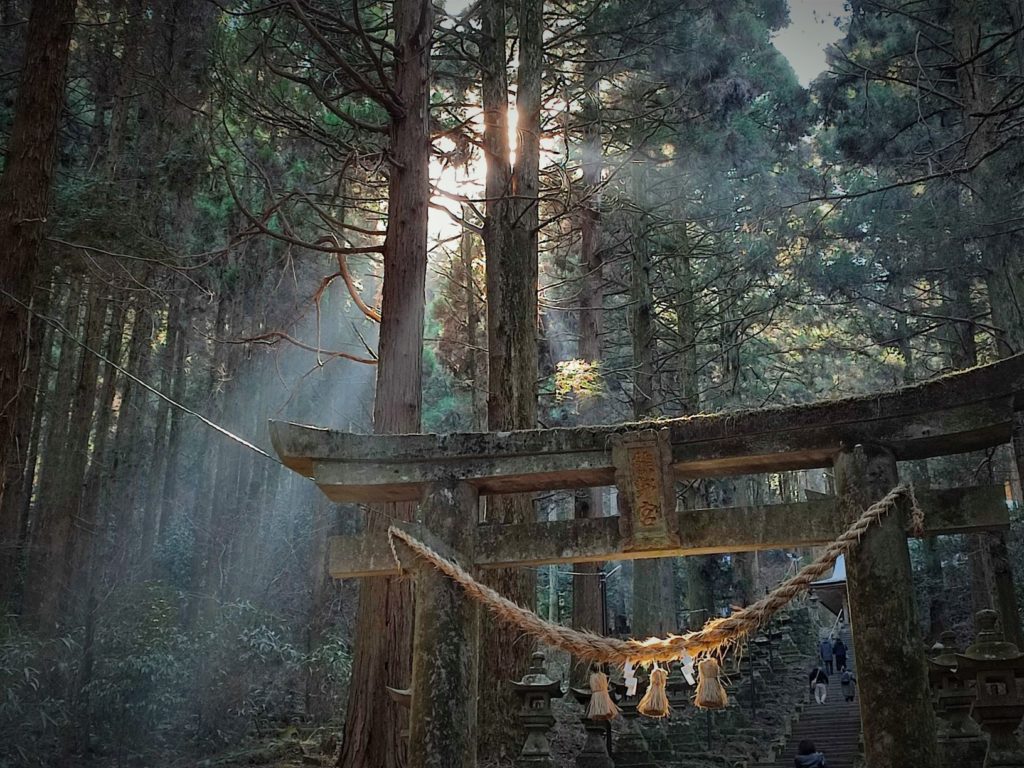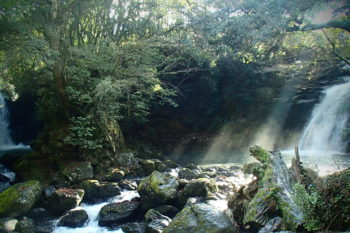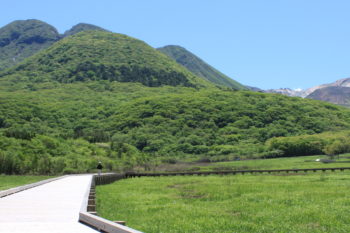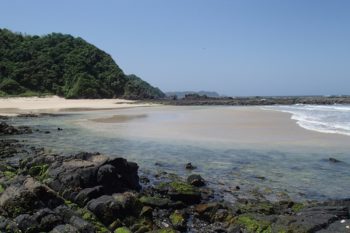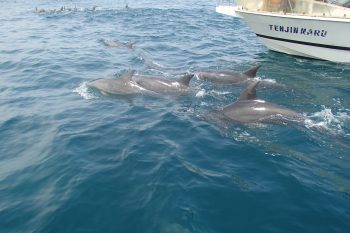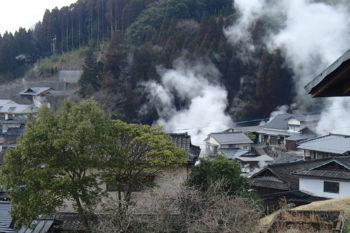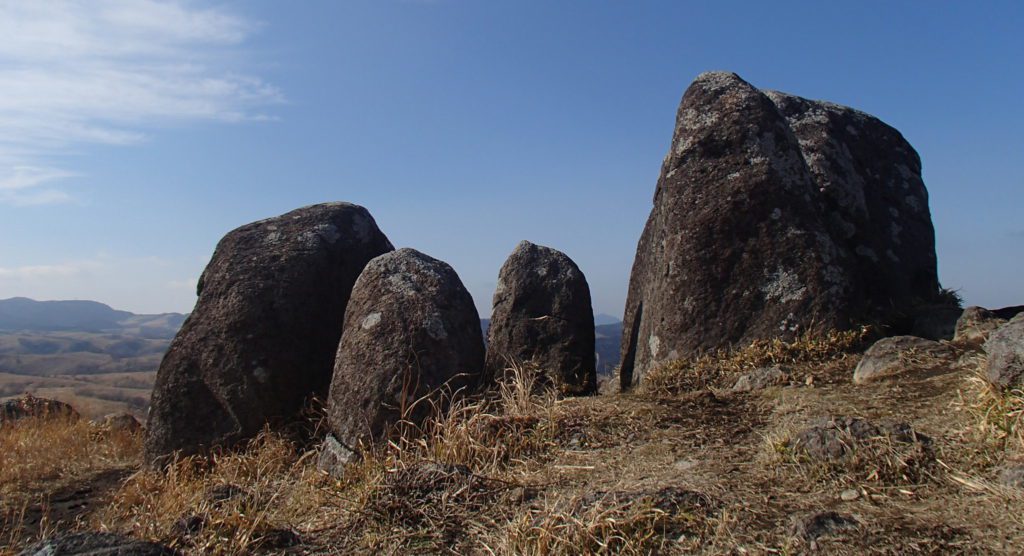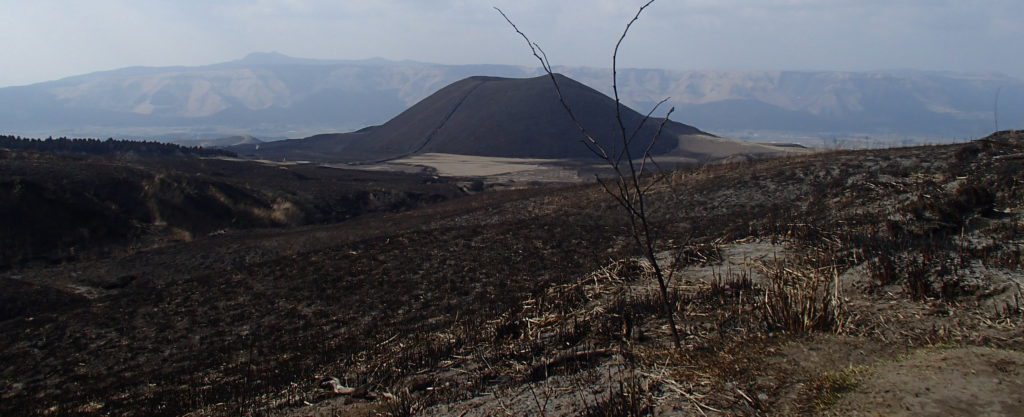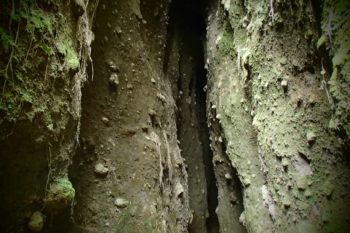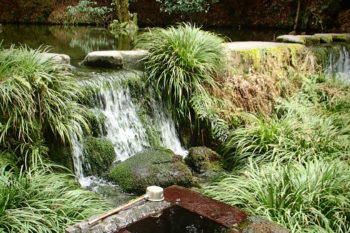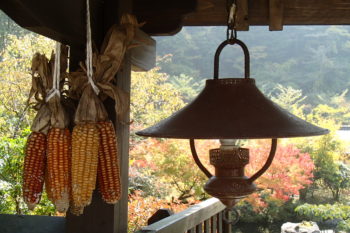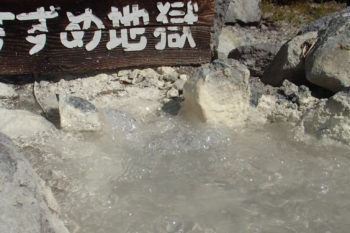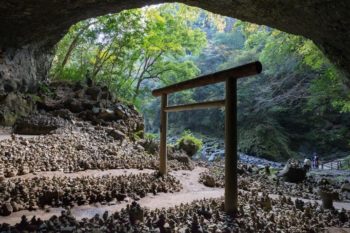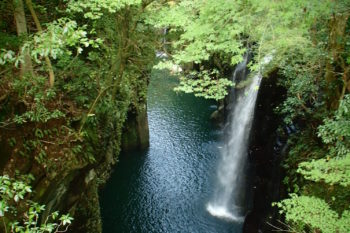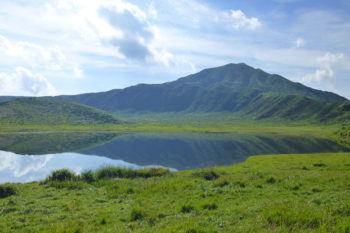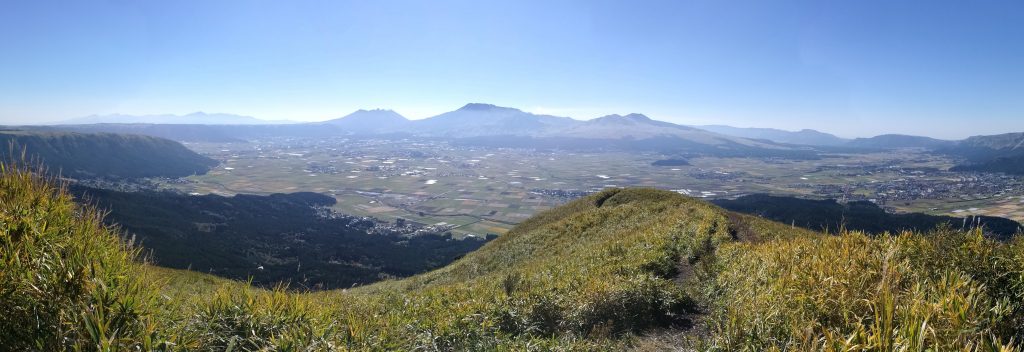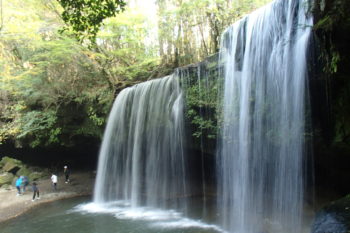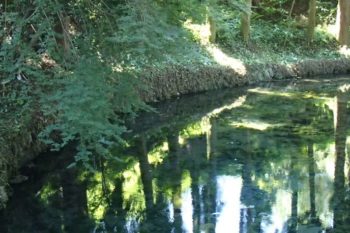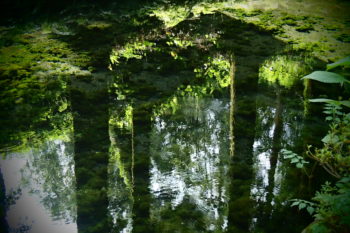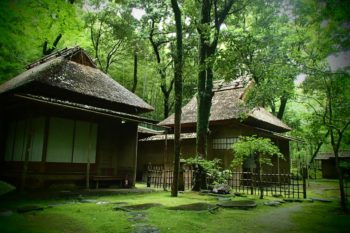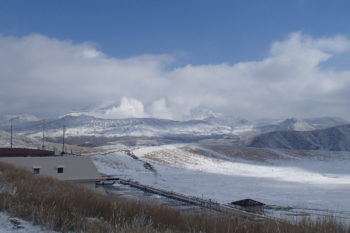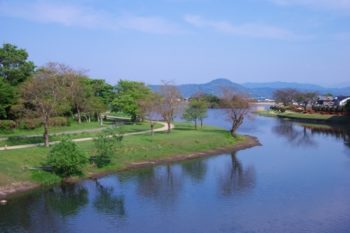Nature
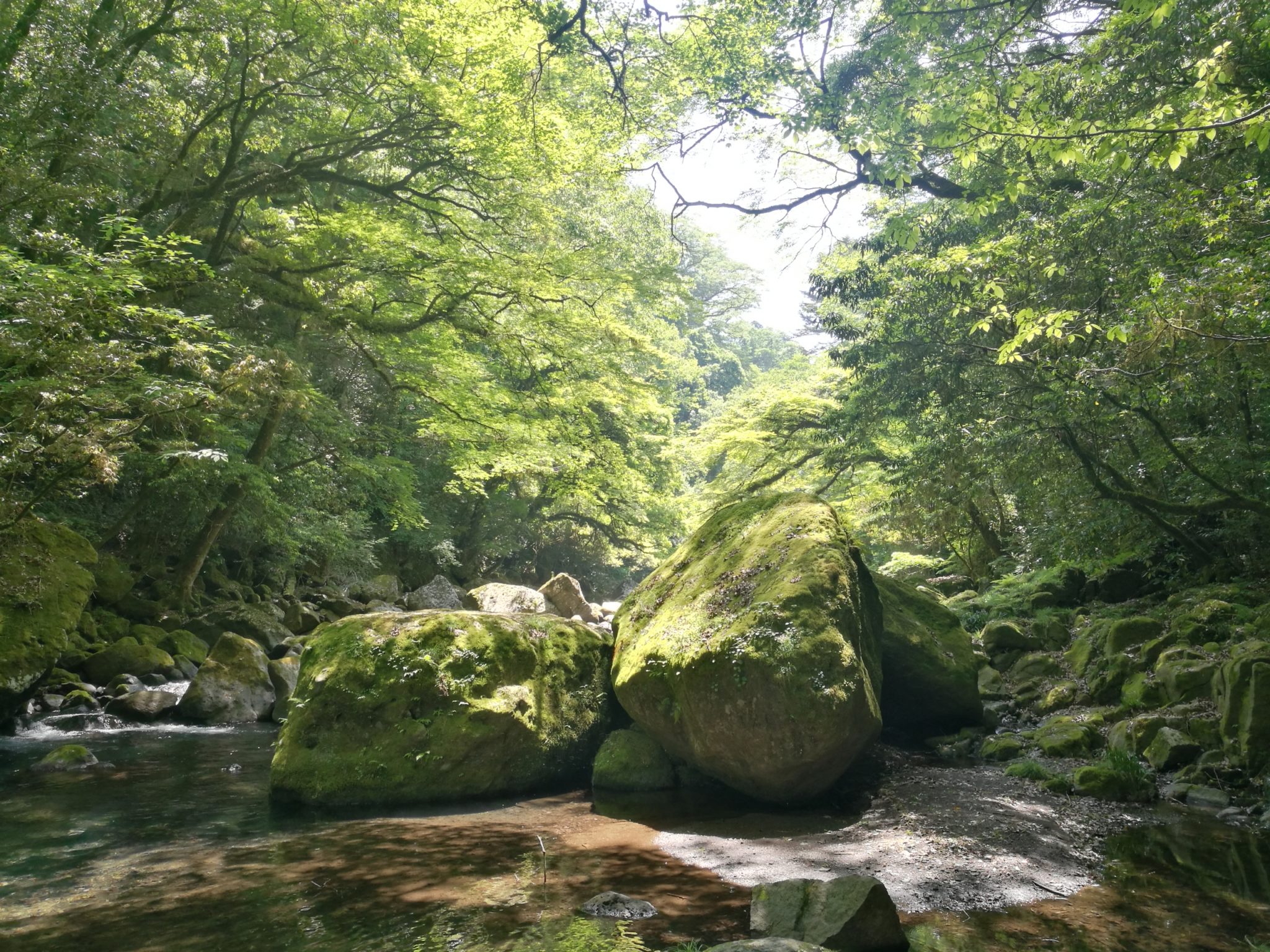
Nature in Kumamoto
Kumamoto prefecture has some beautiful natural sites
Landscape & Geography
The landscape and geography has been formed from tectonic movement and hugely devasting volcanic eruptions over hundreds of thousands of years. This activity has left behind one of the world’s biggest volcanic calderas, several volcanic mountain ranges, waterfalls, gorges and caves. The Nakadake volcano in Mount Aso is one of Japan’s most active volcanoes, second only to Sakurajima in Kagoshima. The Aso volcano has been a place of worship for thousands of years and is highly unusual as despite its activity it is often possible to visit the crater area and look inside.
People living in harmony with nature
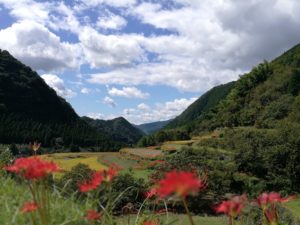
People have been living and farming the land for thousands of years. Using volcanic rock to terrace the mountains of Kinpozan, engineer beautiful stone bridges and build Japan’s strongest castle.
Hiking
There are plenty of hiking opportunities and the grasslands that dominate the Aso and Kuju mountain areas are beautiful in every season changing from lush green in spring to golden in the winter. Another aspect of the volcanic activity is Kumamoto prefecture has Japan’s largest underground water supply; clean, fresh mineral water bubbles up in a variety of springs and spring fed lakes. Geo thermal heat also provides some of the best quality hot springs in Japan.
Kumamoto Prefecture also has a chain of islands called Amakusa which jut out into the shallow Ariake sea, home to schools of dolphins, fossils, a wealth of sealife and some great beaches and sunset views.
Take a look below at a selection of the wonderful nature you can enjoy in and around Kumamoto Prefecture.
